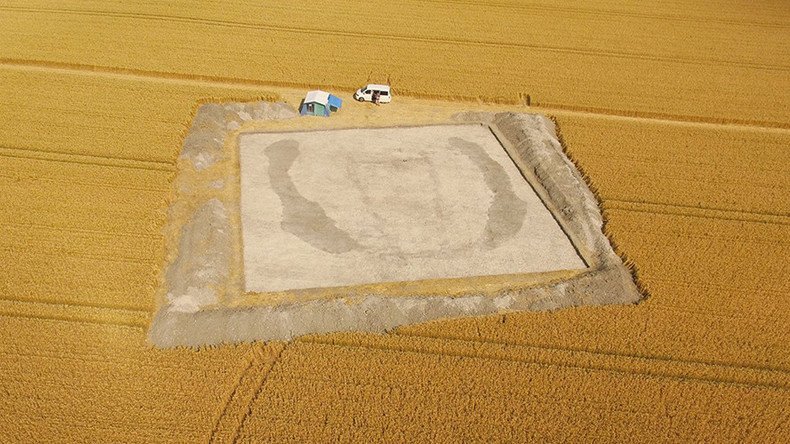6,000yo ‘House of the dead’ discovered near Stonehenge (PHOTOS, VIDEOS)

A team of archaeologists uncovered what’s believed to be one of the UK’s earliest structures; a Neolithic burial site believed to date back to 3,600 BC which may contain the remains of the people who helped build the world-famous Stonehenge monument.
The combined student-teacher team from the University of Reading’s Archaeology Field School have been working at the site for almost three years but recent aerial photography and geological surveys yielded some fantastic results.
Hear from @Jim_Leary of @UoR_FieldSchool and @UniRdg_Arch about this incredible find - a 'house of the dead' dating back over 5,000 years pic.twitter.com/qFkOntm81M
— Uni of Reading (@UniofReading) July 12, 2017
“This incredible discovery of one of the UK’s first monuments offers a rare glimpse into this important period in history. We are setting foot inside a significant building that has lain forgotten and hidden for thousands of years,” Amanda Clarke, co-director of the Archaeology Field School said in a press release.
The site, dubbed the Cat's Brain, is located in Wiltshire between the two major stone circles at Avebury and Stonehenge. The current archaeological dig is the first such in-depth investigation in half a century.
The site consists of a central structure flanked by two ditches which may have been flattened throughout the course of history. It dates from the early Neolithic period in which the first agricultural settlements were established and the first monuments erected.
The monument predates the nearby Marden Henge by more than a millennium and may contain human remains buried as far back as 3,600 BC.
An open day will be held at the site on July 15 to allow members of the general public to witness the excavation live.
“Members of the public now have the chance to visit us and see prehistory being unearthed as we search for human remains on the site. Discovering the buried remains of what could be the ancestors of those who lived around Stonehenge would be the cherry on the cake of an amazing project," Dr Jim Leary, archaeologist at the University of Reading said in a press release.
A team from @UniRdg_Arch is excavating a rare burial mound which may contain human remains from 3,600BC: https://t.co/PTlbAdGaVFpic.twitter.com/iPJF4mcosE
— Uni of Reading (@UniofReading) July 12, 2017
The excavation will conclude a three-year project undertaken by the University of Reading’s Archaeology Field School. The team is hoping to uncover artifacts, bones and other items to fill the knowledge gaps from this period of history and potentially identify the builders of one of the most iconic neolithic monuments in the world, Stonehenge.












